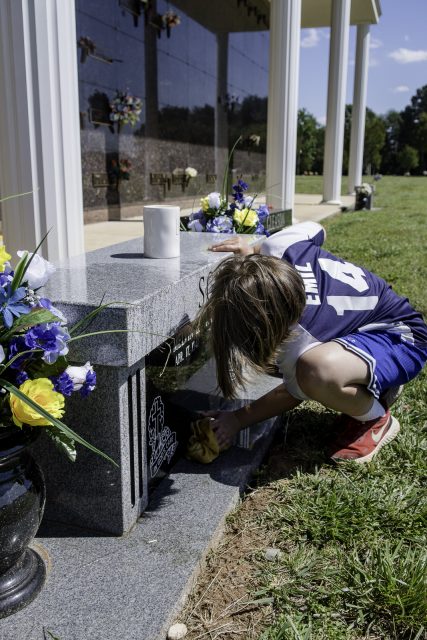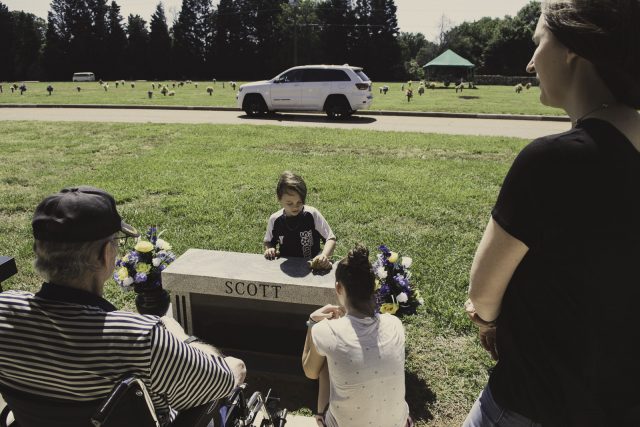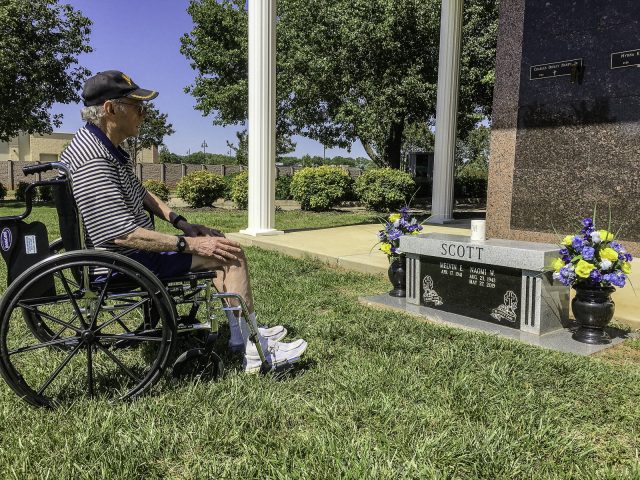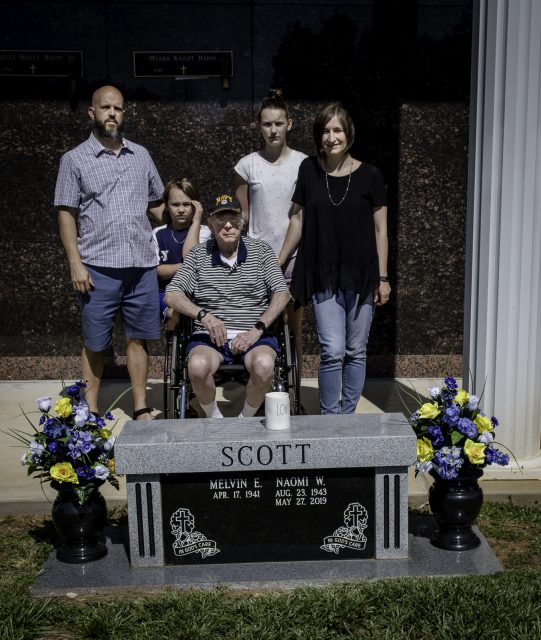Two radically different thoughts that rattled around my head today, completely unconnected other than the fact that I thought about them during the same 12-hour period…
Mother’s Day
It’s the first Mother’s Day without Nana. A year ago, we were just about ready to move Nana and Papa into the almost-completed living space, and we had a Mother’s Day dinner at Nana’s and Papa’s. We all sat around Nana’s bed as we ate, and L and I gave her a small succulent that was small enough to sit on her bedside table. I don’t remember what we ate; I don’t remember what we talked about. Had we known then that it was our last Mother’s Day with her, we probably would all remember those details, but that’s the problem with most lasts — we don’t know they’re the last this or last that.

It reminds me of how a priest once explained how he avoids becoming complacent and (did he say this? He might have used this word) even bored with the Mass, saying the same thing day in and day out, over and over again. “I try to treat every Mass as if it’s the first, last, and only Mass I’ll ever celebrate.” When we know it’s the last time we do something, we tend to slow down and savor it.

I used to get very upset at lasts. I wanted, as Counting Crows’ Adam Duritz sings, “to hold on to these moments as they last,” and when it’s the last one, it doesn’t last long. (That’s an odd little thing, isn’t it? “Last” as a verb and “last” as an adjective. “How long does the last one last?”) When I knew the last moments of some experience were approaching or the last time I would do something was nearing, I always grew just a touch melancholy.

The last day of school, for instance, used to be a little sad because I found myself thinking that I’d never see these kids in whom I’d invested so much. I’d forged relationships with them, some of which were hard-won and very frustrating as they developed. It had taken me a long time with some of them to convince them that I was, indeed, on their side, that even when I was giving them a hard time about their behavior, doling out consequences that they felt were unfair, I was still on their side.

But endings are often beginnings. I think of Eliot’s “East Coker,” which ends, “In my end is my beginning.” It is, of course, a reference to the afterlife, but all endings are also beginnings — an old, time-worn truth. The end of every school year promises the beginning of the next.
That is where I differ from the rest of the folks in our household: they all believe that Nana’s end was her beginning; sadly, I have my doubts. It’s a lovely thought, and one that of course I hope is true in a sense because Papa, for instance, has so much invested emotionally in that idea. But if I’m right, we’ll never know; we’ll only know if I’m wrong.

It was with all these thoughts in my head that I drove the family to visit Nana’s grave today for Mother’s Day. Papa bought a couple of new bouquets of artificial flowers — lovely ones of multiple shades of blue with yellow and white roses to off-set the sea of blue. Nana would approve, no doubt. Blue was her favorite color, and there are enough shades of blue in the bouquets to fill the sky.
Conspiracy
I’m currently reading Stalin: In the Court of the Red Tsar by Simon Sebag Montefiore, a book about Stalin’s Great Terror ( I love the Russian name, Большой террор — makes me think of the ballet!). At its heart, the Great Terror was unimaginable without Stalin, but it was also impossible without others. Many others. How do you get so many people to go along with that? Simple: conspiracy theories.
Today it seems impossible that virtually every factory and railway line was being sabotaged by Trotskyite terrorists within their management, but Soviet industry was riddled with mistakes and cursed with thousands of accidents thanks to poor management and the breakneck speed of the Five-year Plans: for example, in 1934 alone, there were 62,000 accidents on the railways! How could this happen in a perfect country? “Enemies” among the corrupt elite had surely caused the failures. The arrest of saboteurs and wreckers in the industrial factories and railways spread.
By the time the Terror turned to the army and the Party itself, Stalin was most definitely in complete, unquestioned control. At his word, people lived and died, and very few people questioned his decisions.
Reading this got me thinking about the current situation in America and the conspiracy theories that seem to be popping up like mushrooms are growing positively dangerous.
Some people belittled her, others suggested she was a paid actor or was a healthcare professional who had no direct involvement with the treatment of Covid-19. Others accused her of being an abortion doctor.
“It was heated, people were very fired up about what they had to say,” she told CNN. “A lot of the top comments we got were about us being fake nurses, there was a huge majority of them that still believe this virus is fake, that it’s a hoax and not real at all. They were convinced that we’re fake nurses and that’s why we weren’t talking.”
Quite the opposite of a fake nurse, Ms Leander volunteered to work at her hospital’s Covid-19 unit full time, and has been on the front line working with infected patients for the past month.(Source)
I saw footage of this on Now This but can’t find it now. There is a definite political element to this: all the protestors were wearing “Trump 2020” paraphernalia, and I would bet that every single one of them believes the Deep State conspiracy nonsense. So I read the passage in Montefiore’s book and started wondering what it would take for something like that to happen in America.
Could these people support wholesale executions of people they see as participating in anti-state conspiracies? I don’t know.
We all want to say, “No, no — we’re better than that.” We think about our neighbors and even those nameless faces we see in our own towns and think it impossible. Would Vasili Blokhin’s neighbors or acquaintances have thought he was capable of the acts he committed? He was a prolific executioner who killed many during the Great Terror but most infamously executed over 7,000 Polish officers personally in 28 days in the forest of Katyn.
Just as we never know when an end of this or that is coming, we never know how current events are going to play out. COVID-19 was a problem in China, over there, far away until it wasn’t. With quarantines being lifted around the country before we even really have adequate testing capabilities in place, it’s not inconceivable that we might experience a sharp increase in the number of cases, forcing states to decide whether or not to reimpose restrictions. What will these protesters do then? We’ve already seen armed protesters storm the Michigan statehouse; what else are they capable of? If something happens that results in bloodshed, how will protesters (i.e., rabid Trump supporters) react in other states? We already see signs reading “Give me liberty or give me COVID.”

That’s not a far cry from the original formulation that encouraged revolution.